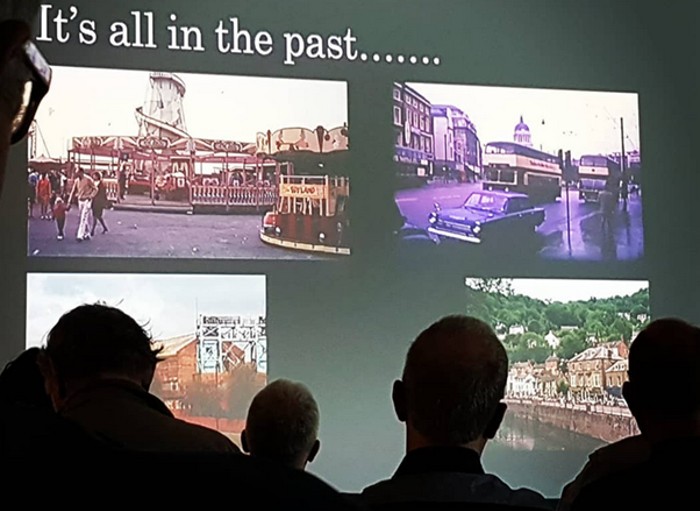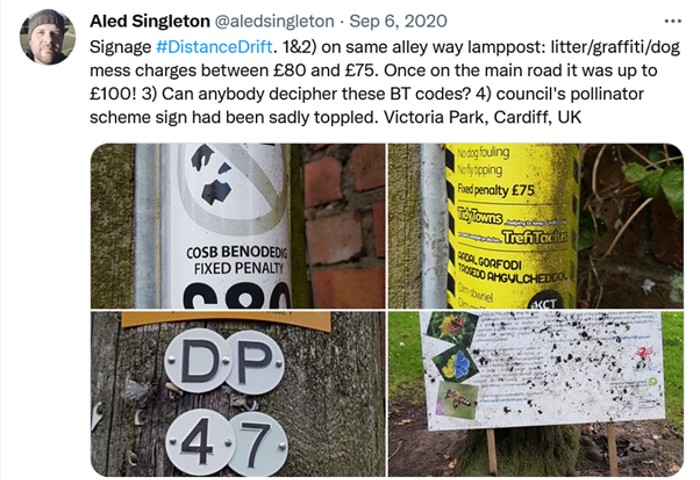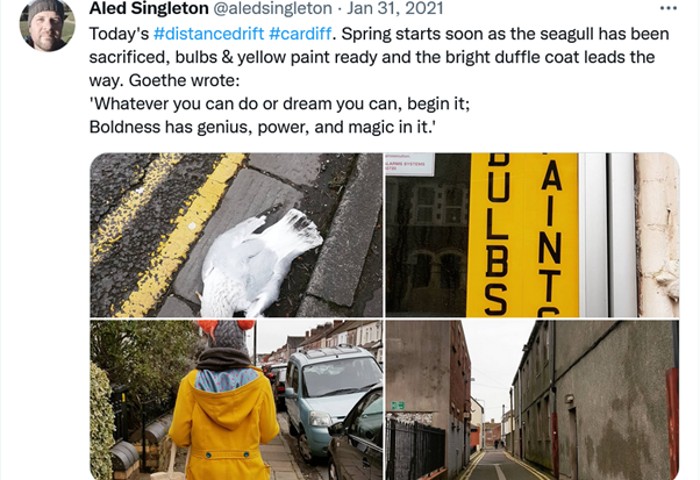Psychogeography Becomes More Accessible — and Goes Online
In the previous two blog posts I have reflected on the space(s) within social science for psychogeographical thinking. During the 1950s and 1960s, there was an artistic and political mission that propelled Guy Debord and his associates. Their mission did not sustain, but a renaissance occurred in Britain a couple of decades later with a literary angle. In this article, I explain how practices such as the dérive have been simplified and used by a wide variety of people. Moreover, the lockdown(s) of 2020 encouraged people to think differently about how to use technologies. The practices discussed here will line us up for the fourth piece, which shows how the internet has helped psychogeography spread from Europe and establish roots wider across the world.
Finding a way into psychogeography
Before going deep into psychogeography for my PhD research I had a limited knowledge. I had read the work of writers such as Iain Sinclair and W G Sebald. Inherently I knew what this approach was about through group walks in 2017 and 2019. However, a big part of my education started when I traveled up to Huddersfield, West Yorkshire, for the 2019 edition of the 4th World Congress of Psychogeography (4WCOP). The three-day event included university talks on Friday coupled with two days exploring villages and towns nearby on Saturday and Sunday.

I learned a great deal from attending the Friday event. For example, two academics explained how they had found a space for psychogeography: Tina Richardson’s Schizocartography and Alex Bridger social psychology angle. Alongside shows of photography (see above) there was a mesmerizing live performance from Patrick S Ford as he wheeled a suitcase around a square in Ho Chi Minh City, Vietnam. Whilst it was morning in a Huddersfield lecture theatre, he was thousands of miles away and it was dark. Beyond the artistic approach, I realized that the free public wi-fi in Ho Chi Minh City must be pretty extensive. This started to make me think about how the internet could allow many people to join a live walk in a different place. This thought thoughts to exploring how the internet become prominent in 2020.
How the pandemic brought online psychogeography to the foreground
The pandemic locked people down across the world from spring 2020. In Britain, we were sometimes restricted to one hour outside a day. And lots of time either alone or with people in our household. For my part it was a good opportunity to write my PhD thesis, having gathered all the interviews and run a few outdoor public events in 2019. I received an email from 4WCOP in May 2020 with an update about the next gathering. They wrote that:
There followed an invite to submit proposals for a Congress which would take place during a long weekend in September and be completely online. There was interesting terminology with the word ‘despatialized’ and a welcome for ideas from any place in any time zone of the world to take place during those 72 hours.
I put forward a Zoom talk about a walk inspired by the writer Arthur Machen. The experience of presenting online was useful for my own practice, but there were lots of very interesting contributions within the wider program. For example, I joined artist and academic Simon Woolham on a one-to-one walking journey using Google Earth. He hosted our online walk on Skype and used some software to make a video from our conversation. The meeting was centered on the place where I grew up, which repeated a process followed by Simon on Wythy Walks – a project to recall growing up in Wythenshawe. Incidentally, this suburb of South Manchester, England, is where geographer Doreen Massey also came from.
Altogether this online walk felt like a really strong social research method. Simon had mapped edited video conversations for his website In Search of the Shortcuts, which has also led to subsequent publications. Some of the group projects were also useful.
Group Project: Extreme Noticing
I really enjoyed the Extreme Noticing under Lockdown film (18 minutes). This initiative involved a group of people in Stirchley, on the edge of Birmingham, England, who launched a walking collective during the pandemic. Due to the legal demands for people to go alone, members of the group would walk the same routes repeatedly and notice things that they had not noticed before. They said that “alongside society’s seismic shifts, their attentions were reprogrammed. As the everyday faded away, other stuff took its place, from the mundane to the really odd.” There is something in here of breaking down dominant messages which relates back to the philosophy of the Situationists. The group, who have an online presence on http://walkspace.uk, were also very generous in their practice as they “invited other lockdown walkers to tell them what they’d seen, and accidentally created a social record, a collective practice and a resource for future walk-work.”
To my mind, this sounds like a really good ethnographic practice. Another interesting idea connected with extreme noticing was the Distance Drift; developed on social media platform Twitter by writer and walker Sonia Overall.
Using social media to connect synchronized walks
Every Sunday morning at 10 a.m. Sonia sends out a #distancedrift message on Twitter with a set of instructions for people to follow over the next hour. My first attempt, on Sunday 6 September 2020, is shown below. I left the front door at 10 a.m. and followed an instruction to look out for signage which was close to the ground.

At no point was I ever more than about 300 or 400 meters from the house. Putting the images together I realized that there were lots of things that I had never really noticed. For example, Cardiff Council seemed to impose a higher fine for dog mess on certain streets than it did on others. This was not about different pavements being more valuable; more about stickers and signs being made at different times. I also started to explore the different numbers and codes on lamp posts and other street furniture.
The whole experience is a good ethnographic approach that makes you look and notice things a bit more. On a social level, it works well because people use the #distancedrift hashtag. They comment upon, and share, each other’s observations. Some use Instagram also. In the months and years since that day I have regularly dipped into the Sunday distance drift. The following edition from early 2021 was both surreal and cerebral.

Foundation for looking internationally
The 2020 Congress was a really significant moment for gathering psychogeography fans from across the globe. The 4wcop.org website is an excellent resource with talks and films, including a few by New York-based dancer Jody Oberfelder. My own practice advanced following this event as I developed new working relationships and learned a lot. In fact, coupling the experience of being interviewed by Simon Woolham with the functionality of Zoom helped me develop the spatially-led online interview method. This latter technique features in my first blog here on Social Science Space. The next article in this series centers on the online Congress held in September of 2021 and what emerged on an international level.
The series so far
Mapping the Ebb and Flow of Psychogeography | Broadly speaking we can assume that psychogeography lies between that which studies the psyche and the mind and that which focuses on space and place. However, it is worth stressing that we are mostly concerned with an innovation within geography, particularly of the humanistic kind, rather than a branch of psychology
How British Literary Psychogeography Offers Possibilities for Researchers | Here we explore how the basic principles of Situational International re-emerged as a new form of psychogeography in the British Isles. This form would be less political than the work of Debord, at least on the surface, and would be championed by poets, writers of historical fiction and other forms of literature.
Psychogeography Becomes More Accessible — and Goes Online | Above































































































